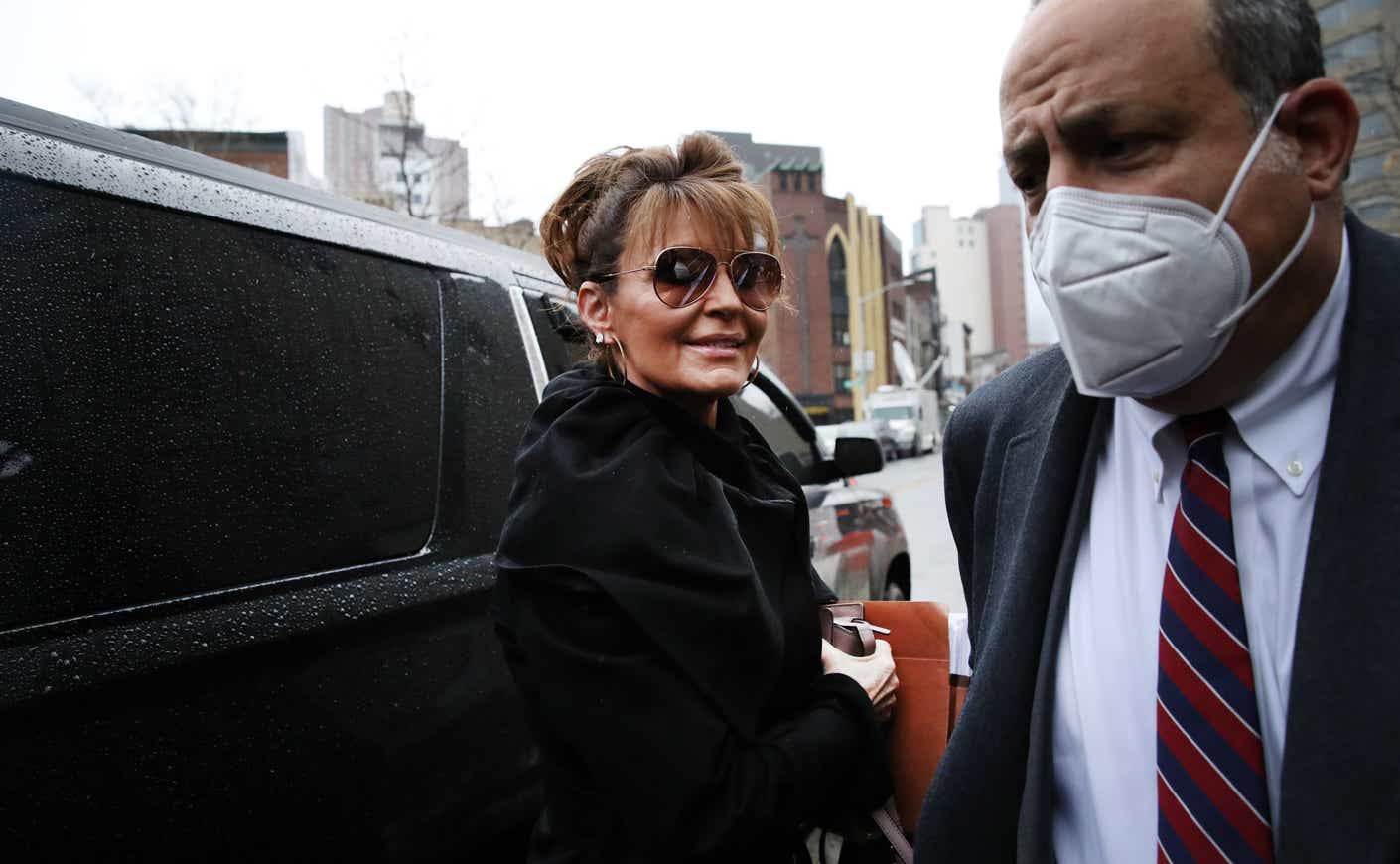Sarah Palin, the conservative firebrand and former governor of Alaska, is suing the New York Times for libel in a case that could have lasting consequences for the press. Here’s a breakdown of the trial:
Why is Palin suing?
Palin sued the New York Times in June 2017, after the paper ran an editorial about gun control; it concerned a man who opened fire on a Congressional baseball practice, wounding Rep. Steve Scalise. In the piece, the NYT wrote that Palin’s political action committee helped incite a 2011 mass shooting, in which Rep. Gabby Giffords was severely injured. The editorial noted that Palin’s PAC had circulated a map that put Giffords and other Democrats under crosshairs.
Two days later, the paper ran a correction, explaining that the map highlighted electoral districts, not the individual lawmakers and that the editorial had “incorrectly stated a link existed between political rhetoric and the 2011 shooting.” Here’s that map:

Palin alleges the editorial damaged her career as a political consultant and has sued for unspecified damages.
How has the trial unfolded?
Attorneys for Palin attempted to paint the editorial as part of a pattern established by the paper and its former opinion editor, James Bennet, to demonize conservatives. “All they had to do was dislike her a little less and we’re not sitting here today,” Palin’s lawyer said in court.
Palin also took the stand to accuse the NYT of deliberately printing lies to damage her reputation. “It was devastating to read a false accusation that I had anything to do with murder,” she said. “I felt powerless — that I was up against Goliath.”
The Times argued that the case centered on an honest mistake that was quickly fixed. Bennet testified last week that he had messed up in editing the piece: “I’ve regretted it pretty much every day since,” he said.
Closing arguments were delivered Feb. 11, leaving the jury to deliberate, but we won’t get to a verdict. On Feb. 14, the judge announced he was dismissing the case, saying Palin’s attorneys failed to produce adequate evidence that the newspaper knowingly published information its staff knew to be false.
“Ms. Palin was subjected to an ultimately unsupported and very serious allegation that Mr. Bennet chose to revisit seven years or so after the underlying events,” U.S. Judge Jed Rakoff said. “So I don’t mean to be understood. I think this is an example of very unfortunate editorializing on the part of The Times.” But he added: “My job is to apply the law. The law here sets a very high standard for ‘actual malice,’ and to this case the court finds that that standard has not been met.”
Palin’s team is expected to appeal, which means the case could continue to drag on for months to come.
Why was the case so important for press protections?
Palin’s suit set out to test a precedent that broadly protects news organizations reporting on public figures. That precedent was set by a landmark 1964 decision, which established that for a public figure to win damages in a defamation case, they have to prove both that the statement is defamatory and made with “actual malice.” (A private citizen simply needs to prove a statement is defamatory.)
Palin, a former vice presidential candidate, is certainly a public figure, so it’s rare that a case of this nature would go to trial. But regardless of the result, it could open the door to more defamation cases that could greatly impact how the media covers powerful figures in the U.S. Check out the Washington Post for more on the issue.









